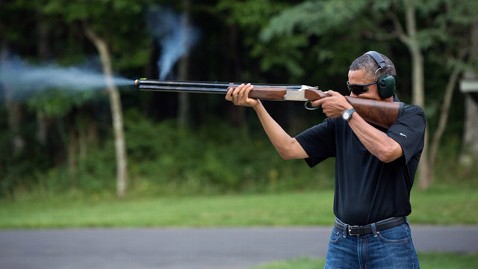A man is under arrest in connection with the killing of former Navy SEAL and "American Sniper" author Chris Kyle, the most deadly sniper in U.S. history, and another man at an Erath County, Texas, gun range, police said.
"We have lost more than we can replace. Chris was a patriot, a great father, and a true supporter of this country and its ideals. This is a tragedy for all of us. I send my deepest prayers and thoughts to his wife and two children," "American Sniper" co-author Scott McEwen said in a statement to ABC News.
ABC affiliate WFAA-TV in Dallas reported that Kyle and a neighbor of his were shot while helping a soldier who is recovering from post traumatic stress syndrome at a gun range in Glen Rose.
The suspect, identified as Eddie Routh, 25, was arrested in Lancaster, Texas, after a brief police chase, a Lancaster Police Department dispatcher told ABC News.
Routh was driving Kyle's truck at the time of his arrest and was held awaiting transfer to Texas Rangers, according to police.
Investigators told WFAA that Routh is a former Marine said to suffer from post-traumatic stress syndrome.
Authorities identified the other man who was killed with Kyle as 35-year-old Chad Littlefield.
AP Photo/The Fort Worth Star-Telegram, Paul Moseley
PHOTOS: Notable Deaths in 2013
Kyle, 38, served four tours in Iraq and was awarded two Silver Stars, five Bronze Stars with Valor, two Navy and Marine Corps Achievement Medals, and one Navy and Marine Corps Commendation.
From 1999 to 2009, Kyle recorded more than 150 sniper kills, the most in U.S. military history.
After leaving combat duty, Kyle became chief instructor training Naval Special Warfare Sniper and Counter-Sniper teams, and he authored the Naval Special Warfare Sniper Doctrine, the first Navy SEAL sniper manual. He left the Navy in 2009.
"American Sniper," which was published last year in 2012, became a New York Times best seller.
Kyle was also an advocate for his fellow service members suffering from PTSD, creating a foundation to help with their treatment.
Travis Cox, the director of FITCO Cares, the non-profit foundation Kyle established, said Kyle's wife Taya and their children "lost a dedicated father and husband" and the country has lost a "lifelong patriot and an American hero."
"Chris Kyle was a hero for his courageous efforts protecting our country as a U.S. Navy SEAL during four tours of combat. Moreover, he was a hero for his efforts stateside when he helped develop the FITCO Cares Foundation. What began as a plea for help from Chris looking for in-home fitness equipment for his brothers- and sisters-in-arms struggling with Post Traumatic Stress Disorder (PTSD) became an organization that will carry that torch proudly in his honor," Cox said in a statement.
The fatal shooting comes after week filled with gun-related incidents, as the national debate heats up on what to do about gun violence.
In the past week, a teen who participated in President Obama's inaugural festivities was shot to death in Chicago, a bus driver was fatally shot and a 5-year-old was taken hostage in Alabama, and a Texas prosecutor was gunned down outside a courthouse.










